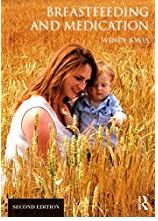I am not going to pretend that I am an expert on complimentary medicine but I am frequently asked about Agnus Castus for fertility and menstrual issues so am including this information based on the LactMed entry
Agnus Castus and Breastfeeding Fact Sheet
Other information may be found in :
- Herbs and Breastfeeding: References. https://kellymom.com/bf/can-ibreastfeed/herbs/herbal-ref/
- Herbal safety for nursing moms. https://kellymom.com/bf/can-ibreastfeed/herbs/herbal_safety/
- The Nursing Mother’s Herbal 2003 by Shelia Humphrey. Available from Amazon £9.99
Agnus-castus (Chasteberry) is from the berries of the chaste tree. The berries contain essential oils Chasteberry is often used for irregularities of the menstrual cycle, infertility, premenstrual complaints, and cyclical breast pain. [Dennehy 2006]
In low doses, chasteberry increases serum prolactin and it is a purported to increase milk supply (a galactogogue). [Javan 2017] however, no scientifically valid clinical trials support this use. Galactogogues should never replace evaluation and counselling on modifiable factors that affect milk production. [ Brodribb 2017, ACOG 2021] Some evidence indicates that high doses of chasteberry decrease serum prolactin and might decrease lactation. [ Eglash 2014 ] It has been used to decrease breastmilk oversupply in Persian traditional medicine.[Kabiri 2017]
In general, chasteberry is well tolerated. The most frequent adverse events are nausea, headache, gastrointestinal disturbances, menstrual disorders, acne, pruritus, and erythematous rash; however, all are mild and reversible. Among 352 nursing mothers given chasteberry tincture, 15 cases of pruritus, exanthema, urticaria, and some cases of early menstrual period occurred. Because of concerning safety data and possible lactation suppression, chasteberry should be avoided during lactation. [Daniele 2005]
See also https://www.e-lactancia.org/breastfeeding/vitex-agnus-castus/writing/
References
- Dennehy CE. The use of herbs and dietary supplements in gynaecology: an evidence-based review. J Midwifery Womens Health. 2006; 51:402–9. https://pubmed.ncbi.nlm.nih.gov/17081929/
- Javan R, Javadi B, Feyzabadi Z. Breastfeeding: A review of its physiology and galactogogue plants in view of traditional Persian medicine. Breastfeed Med. 2017; 12:401–9. https://pubmed.ncbi.nlm.nih.gov/28714737/
- Brodribb W. ABM Clinical Protocol #9. Use of galactogogues in initiating or augmenting maternal milk production, second revision 2018. Breastfeed Med. 2018; 13:307–14. https://pubmed.ncbi.nlm.nih.gov/29902083/
- Breastfeeding challenges: ACOG Committee Opinion, Number 820. Obstet Gynecol. 2021;137: e42–e53. https://pubmed.ncbi.nlm.nih.gov/33481531/
- Eglash A. Treatment of maternal hypergalactia. Breastfeed Med. 2014; 9:423–5 https://www.ncbi.nlm.nih.gov/pmc/articles/PMC4216483/
- Kabiri M, Kamalinejad M, Sohrabvand F, et al. Management of breast milk oversupply in traditional Persian medicine. J Evid Based Complementary Altern Med. 2017; 22:1044–50 https://www.ncbi.nlm.nih.gov/pmc/articles/PMC5871304/
- Daniele C, Thompson Coon J, Pittler MH, et al. Vitex agnus castus: A systematic review of adverse events. Drug Saf. 2005; 28:319–32. https://pubmed.ncbi.nlm.nih.gov/15783241/
